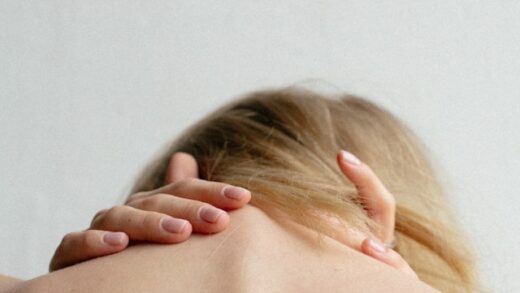Key Takeaways:
- Discover the science behind CoolSculpting and its capability to diminish fat cells
- Recognize if you are an ideal candidate for this non-invasive procedure
- Prepare effectively for your CoolSculpting session for optimal results
- Learn about what the procedure entails and the ensuing recovery
- Understand potential side effects and their management
- Analyze CoolSculpting in comparison to other fat-reduction methods
- Read about real-life results and how to maintain those outcomes
- Get tips on choosing a reliable CoolSculpting provider
Table of Contents:
- What is CoolSculpting and How Does it Work?
- Am I a Good Candidate for CoolSculpting?
- Preparing for Your CoolSculpting Session
- The CoolSculpting Experience: During the Procedure
- Post-CoolSculpting: Recovery and Aftercare
- Potential Side Effects and How to Manage Them
- Comparing CoolSculpting to Other Fat Reduction Techniques
- How to Maintain Your CoolSculpting Results
- Choosing the Right CoolSculpting Provider
What is CoolSculpting and How Does it Work?
CoolSculpting has emerged as a revolutionary method in aesthetic treatments, offering a non-invasive alternative to traditional fat reduction surgeries. The science behind this approach, known as cryolipolysis, hinges on the vulnerability of fat cells to cold temperatures, which leads to their breakdown and eventual elimination from the body through natural metabolic processes. Patients are often drawn to this procedure as it involves no needles, incisions, or need for anesthesia, and it targets specific areas of concern where fat accumulates, such as the abdomen, thighs, and love handles. CoolSculpting Virginia Beach specialists, among others, have refined the application of this science, making fat reduction accessible and convenient for many.
Am I a Good Candidate for CoolSculpting?
Only some people are suitable prospects for CoolSculpting, as it is not a panacea for weight loss. Those who benefit most from this procedure are often at or near their ideal body weight but struggle with stubborn areas of fat that resist diet and exercise. Understanding the distinction between weight loss and body contouring is vital: CoolSculpting is designed to sculpt and refine one’s shape by targeting specific fat pockets, thereby enhancing the body’s contours. While it’s not the solution for significant weight reduction, it’s a powerful tool for fine-tuning and reshaping. Individuals contemplating CoolSculpting should have good skin elasticity and realistic goals regarding the treatment’s outcomes.
Preparing for Your CoolSculpting Session
Preparation is a crucial step towards ensuring the success of your CoolSculpting treatment. Apart from maintaining a stable weight and a healthy diet, it’s equally important to keep hydrated and inform your clinician of any existing medical conditions or medications. Certain anti-inflammatory drugs or supplements that may increase bruising should be avoided before the procedure. In most cases, no drastic lifestyle changes are needed before the treatment. However, a comprehensive evaluation during a pre-treatment consultation will confirm whether additional preparatory steps are required to customize your experience for the best results.
The CoolSculpting Experience: During the Procedure
As patients embark on their CoolSculpting journey, they can typically expect a seamless process. Clinicians first mark the areas to be treated and then apply a clear gel pad to protect the skin. Once the CoolSculpting device is positioned, it draws the bulge into a cup with gentle vacuum pressure, and controlled cooling begins. Although the initial chill might be surprising, the area generally numbs within a few minutes, making the treatment tolerable. Treatment times can vary based on the size and number of areas being addressed, but sessions usually last around one hour, during which patients can relax, read, or even work on a laptop.
Post-CoolSculpting: Recovery and Aftercare
One of the most applauded aspects of CoolSculpting is the swift recovery period. Most individuals can resume their daily routines immediately following the procedure, starkly contrasting the lengthy downtime associated with surgical alternatives. Some may experience temporary side effects such as tenderness or numbness, but these discomforts are minor and short-lived. Consistency in diet and exercise post-treatment not only aids in a smooth recovery but also reinforces the longevity of the results. Over the following weeks, the body naturally disposes of the affected fat cells, culminating in visible fat reduction.
Potential Side Effects and How to Manage Them
CoolSculpting’s side effects are generally minimal but can include sensations of pulling, tugging, mild pinching, tingling, stinging, or cramping at the treatment site. Post-treatment effects like redness, swelling, bruising, and sensitivity can occur but usually resolve within a few days to weeks. It’s advisable to follow any personalized aftercare instructions the treatment facility provides. Staying hydrated and lightly massaging the treated areas can facilitate a comfortable recovery. If any side effects persist or cause concern, contact your CoolSculpting specialist to ensure a safe and effective healing process.
Comparing CoolSculpting to Other Fat Reduction Techniques
CoolSculpting stands out among fat reduction treatments due to its non-invasive nature. In contrast to liposuction, which physically removes fat and requires anesthesia and recovery time, CoolSculpting’s approach to fat reduction is much less aggressive and involves no downtime. Having an open discussion with one’s healthcare provider about the most appropriate treatment is essential, as CoolSculpting might not be suitable for everyone. For instance, those seeking more immediate or significant results may opt for traditional liposuction. It all hinges on individual needs, goals, and medical history.
How to Maintain Your CoolSculpting Results
The longevity of CoolSculpting results largely depends on one’s commitment to a healthy lifestyle post-procedure. A balanced diet, routine exercise, and weight management are paramount to maintaining the sculpted body contours achieved through treatment. This imposes a sense of accountability on patients to uphold their physique, often leading to more persistent lifestyle changes. Knowing that the motivation to maintain these results can catalyze a more health-conscious and active lifestyle is encouraging.
Choosing the Right CoolSculpting Provider
The provider’s expertise plays a critical role in the outcome of the CoolSculpting procedure. When selecting a clinic, one should consider the provider’s qualifications, experience, and track record with the treatment. It’s also worthwhile to evaluate before-and-after photos and patient testimonials to gauge the clinic’s ability to consistently deliver desired results. During consultations, asking pertinent questions regarding the treatment specifics, potential risks, and recovery expectations helps clarify the overall process and contribute to a more informed decision.



